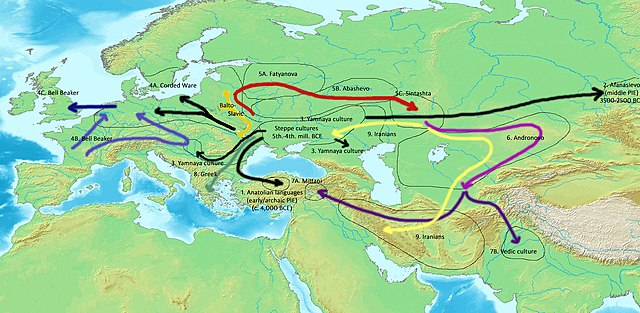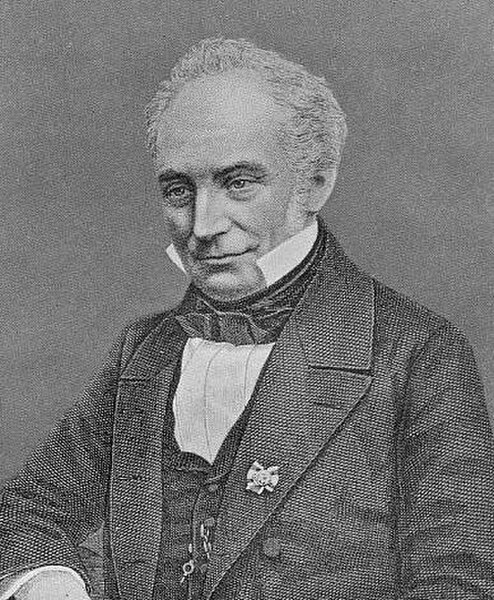The Kurgan hypothesis is the most widely accepted proposal to identify the Proto-Indo-European homeland from which the Indo-European languages spread out throughout Europe and parts of Asia. It postulates that the people of a Kurgan culture in the Pontic steppe north of the Black Sea were the most likely speakers of the Proto-Indo-European language (PIE). The term is derived from the Turkic word kurgan (курга́н), meaning tumulus or burial mound.
Scheme of Indo-European language dispersals from c. 4000 to 1000 BC according to the Kurgan hypothesis. Center: Steppe cultures 1: Anatolian languages (archaic PIE) 2: Afanasievo culture (early PIE) 3: Yamnaya culture expansion (Pontic-Caspian steppe, Danube Valley) (late PIE) 4A: Western Corded Ware 4B: Bell Beaker culture (adopted by Indo-European speakers) 4C: Bell Beaker 5A-B: Eastern Corded ware; 5C: Sintashta culture (proto-Indo-Iranian)
The Indo-European languages are a language family native to the overwhelming majority of Europe, the Iranian plateau, and the northern Indian subcontinent. Some European languages of this family—English, French, Portuguese, Russian, Dutch, and Spanish—have expanded through colonialism in the modern period and are now spoken across several continents. The Indo-European family is divided into several branches or sub-families, of which there are eight groups with languages still alive today: Albanian, Armenian, Balto-Slavic, Celtic, Germanic, Hellenic, Indo-Iranian, and Italic; another nine subdivisions are now extinct.
Franz Bopp was a pioneer in the field of comparative linguistic studies.
Indo-European language family tree based on "Ancestry-constrained phylogenetic analysis of Indo-European languages" by Chang et al.
Scheme of Indo-European language dispersals from c. 4000 to 1000 BCE according to the widely held Kurgan hypothesis. – Center: Steppe cultures 1 (black): Anatolian languages (archaic PIE) 2 (black): Afanasievo culture (early PIE) 3 (black) Yamnaya culture expansion (Pontic-Caspian steppe, Danube Valley) (late PIE) 4A (black): Western Corded Ware 4B-C (blue & dark blue): Bell Beaker; adopted by Indo-European speakers 5A-B (red): Eastern Corded ware



